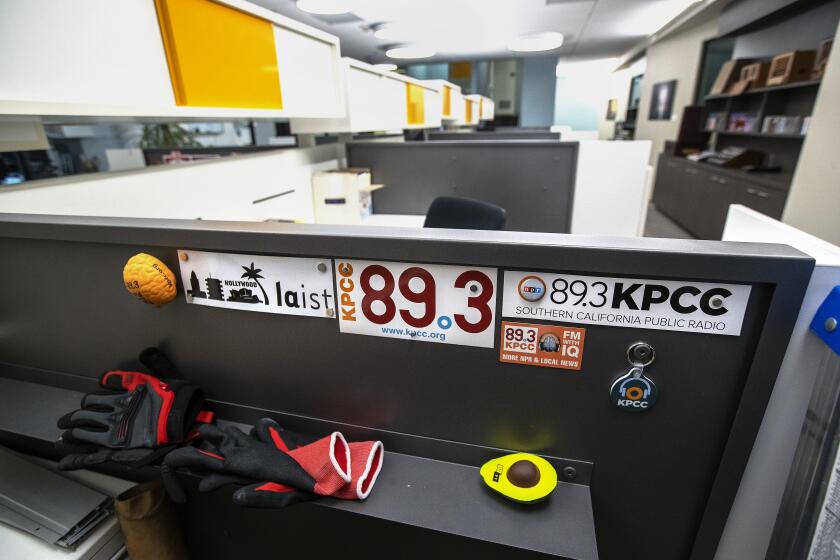Industry Output Gains Pave Way for New Growth
Paving the way for a new surge of economic growth, America’s factories expanded their output of automobiles, home appliances and furniture during December and helped generate a strong 0.7% gain in the nation’s industrial output, the Federal Reserve Board reported Thursday.
Economists said they were encouraged by last year’s strong finish and predicted a healthy, low-inflation business climate during 1986. The business expansion is entering its fourth year without any apparent signs of weakness, many analysts believe.
“We foresee no recession at all,” said Ronald Utt, associate chief economist for the U.S. Chamber of Commerce.
The White House, too, was buoyantly optimistic about business prospects.
Production Increases
“For two months straight we’ve had good, strong increases in industrial production,” spokesman Larry Speakes said. “This sizable increase . . . combines with other data to show that 1986 will indeed be a good year for the economy.”
The December gain follows a revised November figure showing a rise of 0.6% in production by the nation’s factories, mines and mills.
Output rose last month for most products, including cars and trucks, appliances, television sets and air conditioners and other consumer goods such as clothing and food. The production of business equipment rose 0.2%, while the output of defense merchandise climbed 0.5%. The output of mines and utilities also increased.
December “turned out to be a much better month than people thought it would be and that makes me feel more comfortable with forecasts for a stronger first half,” said Kathleen Cooper, president of the National Assn. of Business Economists.
The business expansion should last at least another year, although inflation could become a problem in 1987, said Cooper, who is a senior vice president and chief economist at Security Pacific National Bank in Los Angeles.
Total industrial output climbed 2% last year, far below the 1984 gain of 11.5%. The Federal Reserve’s index of total production hit 126, compared with a base level of 100 in 1977.
The performance of domestic industries was hurt badly last year under the competitive pressures of a veritable flood of foreign merchandise. The dollar, high in relation to the value of other currencies, made imports comparatively cheap for Americans while raising the price of U.S.-made goods to foreign buyers.
Dollar Declining
But the dollar has been declining in recent months and should help the marketing export efforts of U.S. companies. A surge in exports will lead the U.S. economy to a strong advance in the second half of this year, said John Hagens, vice president at Chase Econometrics, a Bala-Cynwyd, Pa., forecasting firm.
Unemployment, now 6.8% of the work force, will rise in the first half of this year, then return to current levels in the last six months, Hagens predicted.
American manufacturing companies hurt by import competition should be able to expand their sales both here and abroad during 1986, analysts said.
“After months of foundering, American manufacturing is out of the drink and into the swim,” said John Albertine, president of the American Business Conference, a trade association of mid-sized, high-growth corporations. Moreover, these economists said, the falling dollar should make imports somewhat more expensive for American consumers, although the overall inflationary impact should be limited. “There is a battle for market share,” and foreign firms eager to reach American customers will try to restrain price increases, said Bert Dohmen-Ramirez, president of Wellington Financial Corp., an investment advisory firm in Honolulu.
“The drop in oil prices will have a very beneficial impact on inflation” and should help counteract the impact of higher merchandise import prices, Dohmen-Ramirez said, adding: “Inflation will not be a problem for a long time.”
The rise in output last year still leaves a considerable surplus capacity in the nation’s factories, which will help restrain price hikes, Utt noted. Inflationary pressures generally do not begin percolating through the economy until shortages of supplies and labor develop.






